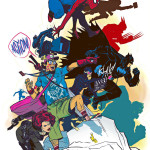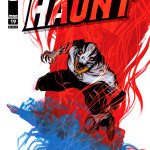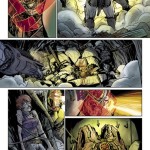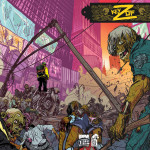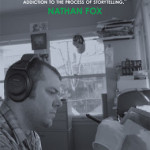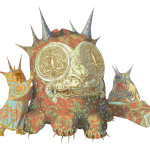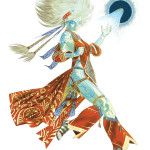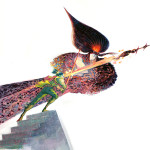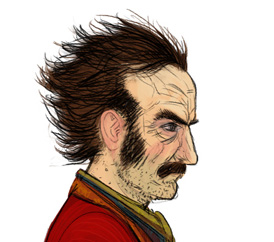
by Ben Zackheim | Jul 1, 2014 | Writing |
I am so pleased to announce the team behind my new Fantasy book series, The Camelot Kids. The ebook series will arrive on Amazon this August!
When I started writing the story years ago I’d hoped to gather an Ace team of illustrators to flesh out my world.
Looks like my wish came true.
The Camelot Kids team
 Nathan Fox is our Art Director and cover artist for the series. You’ve probably seen Nathan’s work in Rolling Stone, Wired, The New Yorker or a multitude of Marvel/DC/Image/Dark Horse comics. Let’s just say that having Nathan Fox on your team is like having a Hulk.
Nathan Fox is our Art Director and cover artist for the series. You’ve probably seen Nathan’s work in Rolling Stone, Wired, The New Yorker or a multitude of Marvel/DC/Image/Dark Horse comics. Let’s just say that having Nathan Fox on your team is like having a Hulk.
Here are some recent illustrations.
So yeah. It’s good to have Nathan Fox on board The Camelot Kids…
And then…Ian Greenlee. Ian Greenlee is an up and comer if I’ve ever seen one. You have never seen work like his. Click on this link, and you’ll see what I mean:
Ian Greenlee
Ian’s work on The Camelot Kids is blowing everyone away. He’s doing the book’s interiors. I can’t wait to roll out the character studies and sketches he’s done so far. I’ll keep showing off peeks here and there, so keep on coming back.
I can’t take it anymore. Just go to his site. Amazing. And wait until you see what he’s doing with The Camelot Kids! I’ll be rolling out peeks at his work in the coming weeks.
Wrapping it all up into a package that will astonish is Raymond Buetens of Slub Design. Ray is an old friend who also happens to have an impeccable eye for book design.
When the softcover comes out, it will be packed with surprises around every chapter. This guy knows how to have fun with a book. Seriously.

On the marketing front is Jeff Rutherford. Jeff works on the deadly-sharp cutting-edge of online marketing. He’s come up with some ideas that are going to get The Camelot Kids in front of every eyeball looking for something, ANYTHING Camelot.
Off we go! The Camelot Kids series will be released in four ebooks from August to November. Then, in December you’ll be able to buy the full book as a softcover or ebook boxed set.
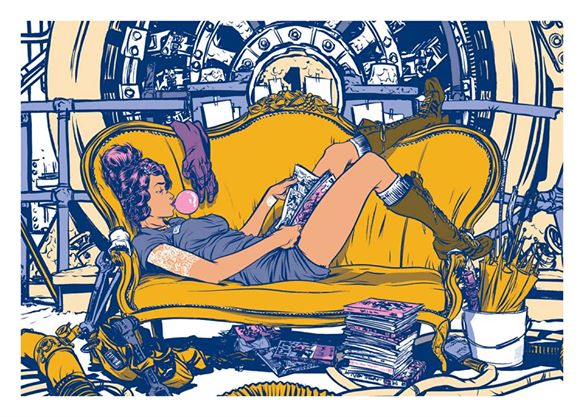

by Ben Zackheim | Jun 28, 2014 | The Camelot Kids, Writing |
Twitter
(Please click the Retweet icon at the bottom of the post below)
Facebook
(Please Share or Like a Facebook post)
If you’re not seeing Share or Like buttons in the post above, then you can click on these links and share from there!
Pinterest
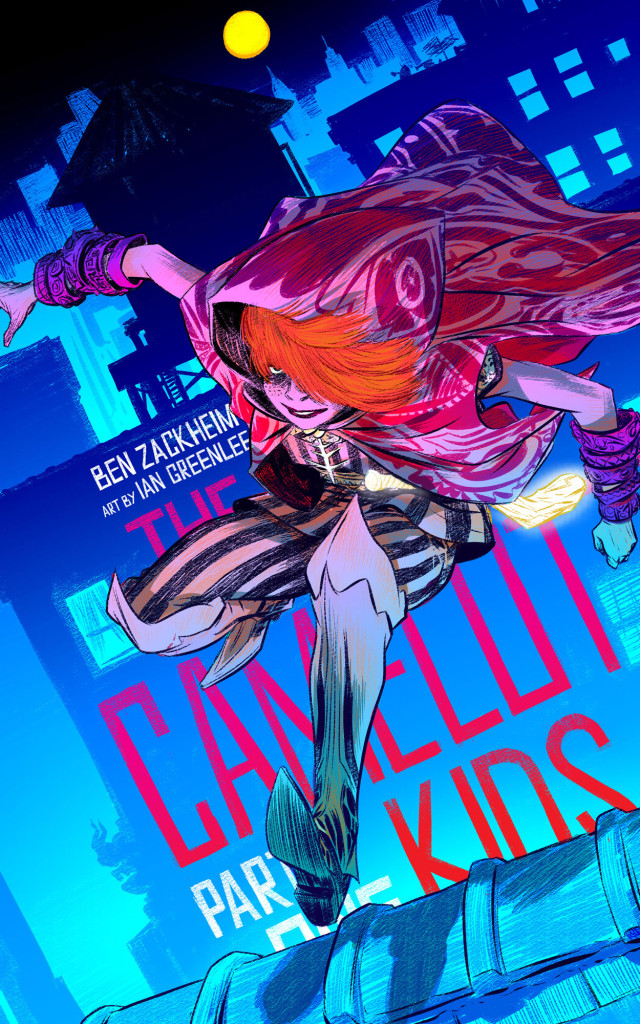
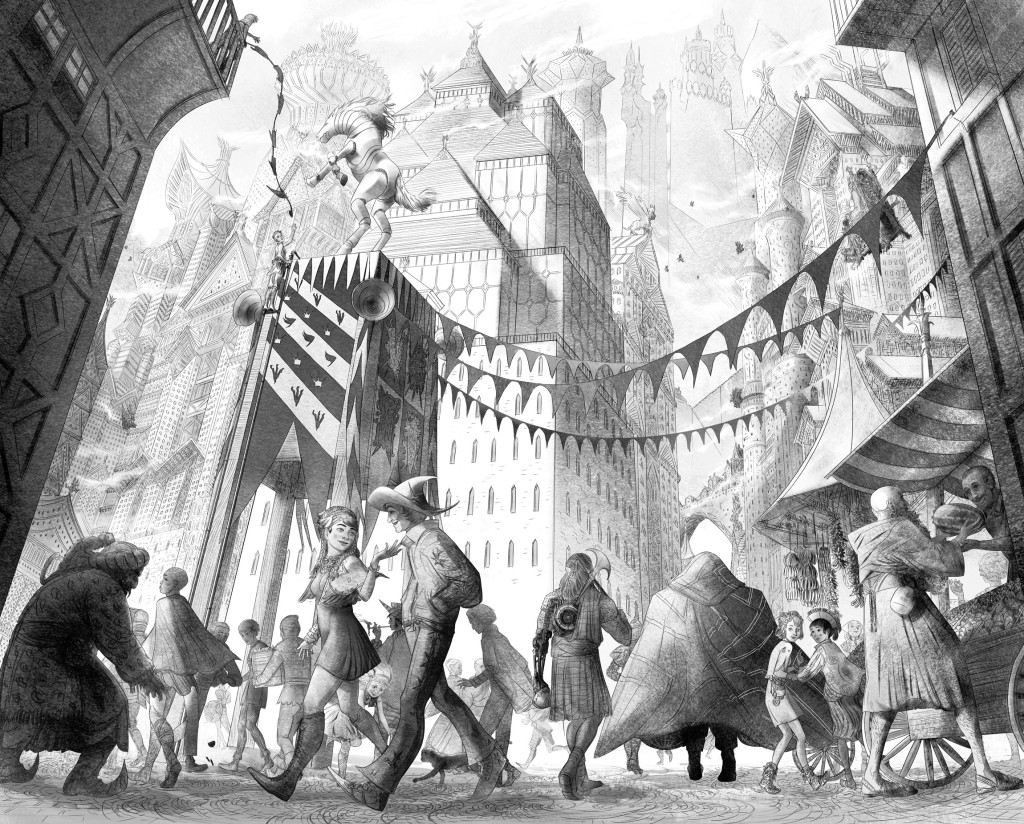
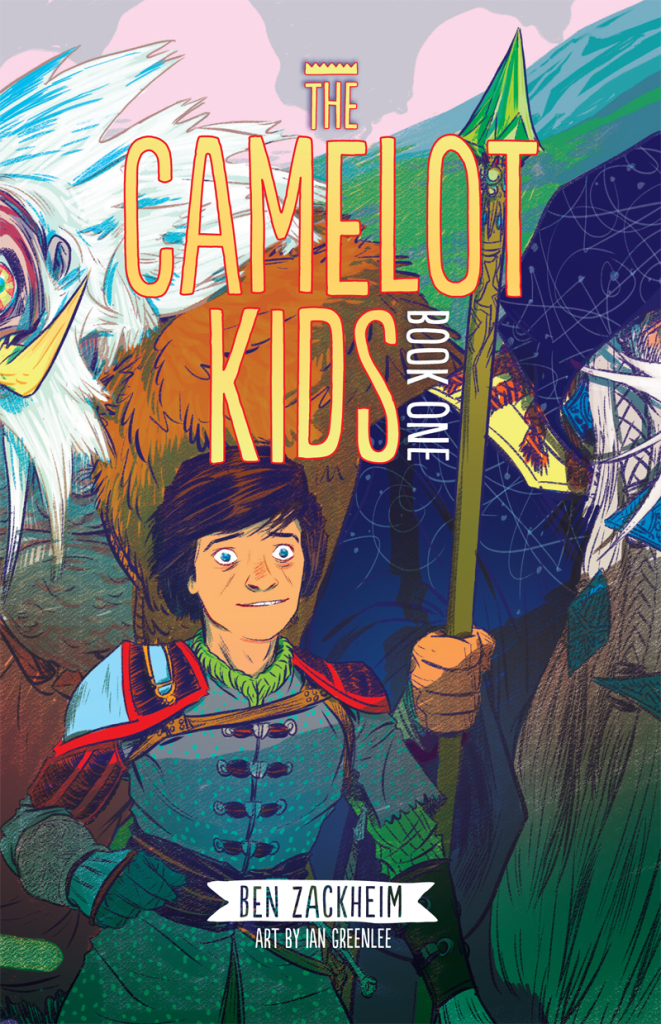
(Please pin this image to one of your Pinterest pages)
Follow Ben Zackheim’s board The Camelot Kids on Pinterest. [divider divider_type=”dark”][/divider]
Take the quiz and share your result!
(Which Camelot character are you? Please share your results on Facebook)

by Ben Zackheim | Jun 24, 2014 | Digital Identity, Writing |

When I talk about an artist’s Digital ID my focus is on the presentation and preservation of who we are and what we do in the digital realm. In my opinion, today’s creative people have a unique opportunity to define how we’ll be discovered, seen and remembered. The same way that victors write the history books, only the artists who make the right choices around their digital legacy will produce lasting work.
It’s a tough concept to get our heads around. Hell, I’m writing this series so that I can begin to understand it myself. But it’s an important discussion, because our conclusions will yield solid next steps for:
-
Being online in a way that’s true to ourselves and our work
-
Ensuring that our hard work will be enjoyed long after we’re gone
So perhaps this particular wrinkle in Google’s robe will shed light on what we’re talking about. Not because it’s some sexy new feature or product. But because of its spectacular presumptuousness.
Forget being remembered, how can you manage to be forgotten?
Europe’s highest court recently passed down a ruling that’s widely called The Right To Be Forgotten. In response, Google announced a new service that allows EU citizens to submit a form to be removed from Google’s European results. I don’t want to get into the details of the process, because the thing that fascinates me is the premise of submitting a form so you can get wiped from the memory of the largest catalog in human history — besides our DNA of course ;-)
Sure, some people may want to protect their privacy. Some want to erase sordid pasts. Some want to start over after identity theft. But what does it even mean to be forgotten in the 21st century? The EU law’s premise and Google’s compliance seem to imply that Google, through its search engine, email, etc. is in some real way trying to remember us. After all, the opposite of being forgotten is to be remembered.
But that’s a flawed premise.
Anyone who is indexed, tracked, covered, Tweeted, shared, Liked, Plussed or nonplussed is not going to be remembered. The data will disappear over time. The memory will dissipate in spectacularly unnatural ways. Server outages will erase books, bad code will decimate entire portfolios, db updates will wipe out metadata, a hack will corrupt billions of sole backups.
Google’s bankruptcy will strand it all, casting trillions of our creations into purgatory, like ghosts who just want to be remembered.
Fire, war, catastrophe, decay. The list of what will most definitely happen to our digital data goes on and on.
So, in the long run, (which is the only run I’m interested in here) the idea that Google is remembering us is like saying cramming for a test is learning. You retain a tiny percentage of what you study, but most, if not all, is lost to the wind.
Maybe the EU and Google and the media just threw a name at the ruling that sounded clever. The right to be forgotten certainly presses some buttons, doesn’t it? Maybe they don’t mean to jump into the murky pool of legacy, or history books or what defines a “permanent record.” But even if that’s the case, the very fact that language like this is used around the digital version of our lives implies that we truly believe that our servers and our electricity and our file formats are part of a strong record, or a collective memory.
They are not.
So “The Right to be Forgotten” throws into stark relief this premise of being online in a way that lasts. Creative people can find a way to get online that’s true to their work and to themselves. But let’s not forget that everything we do online is ethereal in the long-run. That’s not a bad thing. It just means we need to prepare.
In my next post on Digital ID, I want to start laying out a strategy for getting online like you want to get online! Enough philosophy, let’s get our hands dirty for a bit…
By Ben Zackheim
Read more about Digital ID:
What’s your Digital ID?
WordPress for authors and writers (part four)
WordPress for authors and writers (part three)
WordPress for authors and writers (part two)
WordPress for authors and writers (part one)

by Ben Zackheim | Jun 20, 2014 | Writing |
Here’s how to make your book free on Amazon.
I’ve seen a lot of posts try to make a big deal out of it. But if you decide that permafree will work for you, then you just need patience.
Step 1) Either don’t sign up for Amazon KDP Select or opt-out of KDP Select with your existing ebook. You’ll need to wait for your 90 day deal to expire.
Step 2) Make your ebook free everywhere online. That includes Smashwords, Barnes & Noble, iBookstore and Kobo.
Step 3) Ask friends, family and kind strangers to click on this red-outlined link on your book’s Amazon product page:
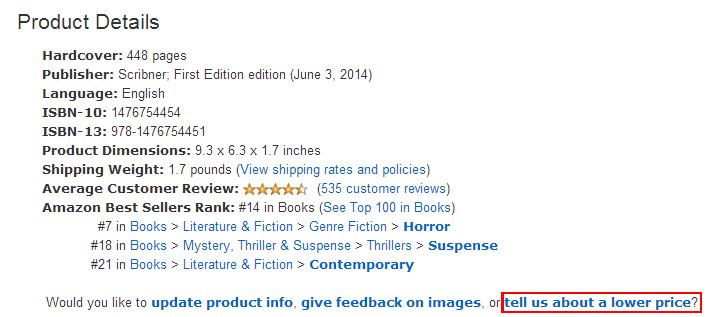
Step 4) Email Amazon support and tell them the book is available for free on other sites. cis@amazon.com
Step 5) Wait for Amazon to price-match to zero.
It may take a while for Amazon to get around to price-matching. Some writers have told me that it took over a month! If a month passes and nothing happens, have more of your friends click on that link above and/or contact Amazon support.
To be clear the “perma” in “perma-free” is anything but permanent. You can always start charging again if you want to.
Good luck, my friends!
by Ben Zackheim
You may also like:
Prepare your book for its free Amazon KDP Select days
Amazon has a bridge to sell ya!
Is Amazon KDP Select worth it?

by Ben Zackheim | Jun 19, 2014 | Writing |
How to price your ebook can be a tough decision.
Which is surprising since there aren’t many standard price points to choose from!
$.99 – $9.99
That can be broken down in fifty cent increments or one dollar increments. ($1.49, $1.99, $2.49, etc.)
Sure, you could charge $1.27, or $6.73, but price points like that tend to make customers think they’re buying a used item.
So with a max of 19 prices, how do you price your ebook?
What does the competition charge?
Get a clear picture of what people expect to pay for your kind of story.The best place to start is to look at what the competition charges in the Top 20, then price-match the books that you’d like to compete with.
For those of us who write in those annoying little gray areas where it’s tough to find the competition… well… we need to dig a little deeper to find good facts to work from.
My Shirley Link mystery series for Middle Grade to Young Adult is a perfect example. Not many indys write in this specific category, which makes it hard to price match with competitors. I’ve found that most people just won’t pay a Nancy Drew price for an indy book.
Not enough competition to price-match? Try, and try again!
After a lot of trial and error, I’ve settled on my latest pricing strategy of:
Shirley Link & The Safe Case (#1): FREE
Shirley Link & The Hot Comic (#2): $.99
Shirley Link & The Treasure Chest (#3): $2.49
Shirley Link & Black Cat (#4): $2.99
It’s a cross between the pricing strategy of Romance ebooks and Kids ebooks. Start free, make #2 cheap, then crawl up to $2.99, where I can start to make some good money.
Frankly, it’s been a tough road to find the right price for Shirley Link! But I’m definitely getting closer as I try different prices and roll out new books.
Should I go free?
Perma-free is the term we use to describe a book that is free “forever.” Many series authors make the first book in the series free because it helps increase visibility. Going perma-free, when done right, can mean higher sales for the rest of your series.
If you write a series, then do the following to decide if you should go perma-free on Amazon.
1) Do 3 Free Promo Days with book #1.
2) Measure the sales of the entire series post-promo.
3) Answer this question: If your entire series did this well all the time would you be happy? If the answer is yes, then ask a follow-up question. Would you be happy if your series did half as well all the time? If the answer to that is yes then make the first book perma-free. Why? Because the book is strong enough to act as a good entry-point for your entire series. So it’s likely that it will drive satisfying sales. If the answer to either question is no, then perma-free is probably not for you.
If your free book doesn’t rocket readers into your other books, then permafree is not a good pricing strategy.
The bottom line is this: your audience will send strong signals if your price is wrong. For instance, if you see slow sales after a successful free promo day on Amazon, then one reason could be the price point. “But I charge one buck for my ebook!” you might say.
The problem could still be with your price.
Your price may be too low.
Try jacking it up 50 cents. Yes, really. It worked for my third Shirley Link book.
One last tip is to reach out to fans. Ask them what they think the book is worth. Your readers can offer some keen insights on topics ranging from pricing to book description to, of course, story content!
How did you decide the price for your ebook? Do you experiment a lot, too?
Check out my post on how to make your book free on Amazon.
by Ben Zackheim
You may also like:
Prepare your book for its KDP Select free promotion days
Amazon KDP Select has a bridge to sell you! No, really.
The $11 Million question: Is KDP Select worth it?
Want to do more research on pricing your book? Here’s some good reading:
Smashwords survey
PBS
Nick Stephenson (with nifty graphs!)
—-
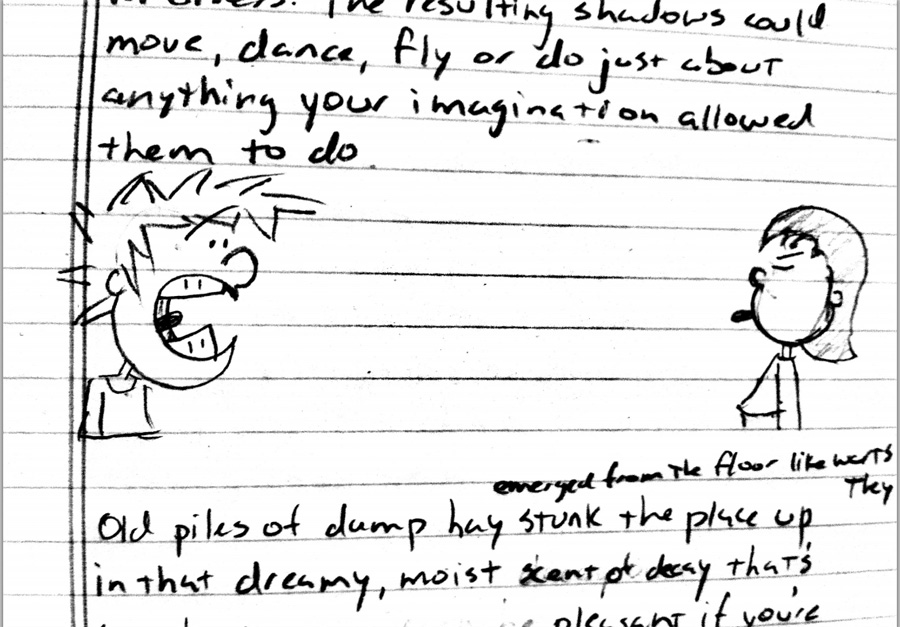
by Ben Zackheim | Jun 18, 2014 | Writing |

Tommy told her to stay away from the edge seven times. But Beth didn’t listen. He couldn’t very well stop her from being a fool when she was clear on the other side of the barn, could he?
“Mom told you to be careful,” he repeated. Usually, using the “M” word was the only thing that could make her listen. Many moms can make us behave with just a faint warning from the past. Tommy and Beth’s mom was most definitely that kind of mom.
But Beth wasn’t like you or me. Beth was, and still is frankly, a misbehaver from toe to hairtip.
Tommy, too, was no sample of sweetness, and frankly still isn’t, but he fancied himself packed with sense. Or, as he liked to call it, Sensibles — because that made him sound blessed by spirits.
They were in the barn that Mom told them to stay clear of. They were doing things Mom told them not to do inside the barn (the one that she told them not to be in). All in all, it was a disaster waiting to happen.
The roof, as it was, wore more holes than Mrs. Whisker’s swiss cheese. Sunlight poured into some areas of the barn, and not at all in others. The resulting shadows could move, dance, fly or do just about anything else your imagination allowed them to do.
Old piles of damp hay emerged from the floor like warts. They stunk the place up in that dreamy, moist cloud of decay that’s somehow pleasant if you’re in the mood to enjoy it.
So, inside this nest of wretchedness, Beth fell from the second floor.
It was a short fall, as most falls are. But Beth’s brain, being a rocket, managed to pack a lifetime inside three seconds.
When she first lost her balance and her right foot didn’t feel the floor in that special way it does when we’re grounded, she thought, “I wonder if my funeral will be sunny.”
She saw her parents sobbing. Her little casket perched above a hole in the ground in such a way that it could be shoved off its pedestal and slid straight down into the Earth.
She spotted Tommy playing her Nintendo DS while the priest spoke about what happens to girls who don’t listen to their mothers. Tommy winked at her, which meant he knew she was watching her own funeral. Then he dove back in to try to beat her high score in MarioKart.
By the time she was pondering the barn from an angle she’d never considered before, namely upside down while twirling, her thoughts had turned to the barn.
It upset her, as she fell to her death, that they would likely respond to her accident by tearing the old place down. Which would hardly be a reasonable way to face such a tragedy!
After all, if one girl could die in an abandoned building at any time then couldn’t all empty buildings be killers-in-waiting? Why not tear all of them down? The barns, the warehouses, the schools…
School.
That’s where Beth’s head settled as she saw the ground below her get significantly closer at a good clip. She wouldn’t really miss school. Not only because she’d be dead and wouldn’t be around to miss it; but also because school was her least favorite way to measure the day:
Meeting
Math
Reading
Lunch
Science
Goals
Pick up
Then, weekends:
Play
Read
Play
Jump in mud
Read
Eat whatever
Hit Tommy
Read
Play
Dinner!
That’s a thousand times better than any school day, even one with a substitute teacher.
She caught a glimpse of Tommy the moment she hit the ground. He was yelling something. Probably, “AAAAAAAAAAAAAAAAAAAAAAH!”
Beth felt bad for her brother. He’d probably feel guilty when she was gone. He might not even play video games for three whole days. Okay, maybe more like two days. But still, their parents would…
Oh no!
Would they blame him? Would they blame Tommy? Would it be like the time Tommy let the dog out by accident and she got caught in the fence?
They wouldn’t!
They might.
So Beth did what any other sister would do in her situation. She hit the ground hard. But as she hit the ground hard, she thought, “How strong are these floorboards anyways?” And, as if to say, “We’re not very strong at all, Beth,” the floorboards cracked under her butt, dropping her straight into a muddy soup below the barn.
Time slowed down to normal, as did Beth’s brain. Or what passed for normal, as there was almost nothing normal about what had just happened.
Tommy was still hollering above her, his fingers clenching his hair. Finally, he managed, “ARE YOU OKAY?”
“I think so,” Beth said, a little short of breath.
She didn’t really hurt anywhere at first. But later on, when the excitement had died down, she found a large splinter in the back of her leg. The scar would always be there to remind her to mind her brother.
On the long walk home they decided to keep the whole thing to themselves. Most parents will grimace at such a decision, but tough luck. The brother and sister had a secret and it welded them together in all the ways brothers and sisters should weld.
“Did your life flash before your eyes?” Tommy asked as they walked up the steps to their back porch.
“No, but the future did. And I’m having none of it.”
That, Beth thought, will be my secret for me, myself and I.
 Nathan Fox is our Art Director and cover artist for the series. You’ve probably seen Nathan’s work in Rolling Stone, Wired, The New Yorker or a multitude of Marvel/DC/Image/Dark Horse comics. Let’s just say that having Nathan Fox on your team is like having a Hulk.
Nathan Fox is our Art Director and cover artist for the series. You’ve probably seen Nathan’s work in Rolling Stone, Wired, The New Yorker or a multitude of Marvel/DC/Image/Dark Horse comics. Let’s just say that having Nathan Fox on your team is like having a Hulk.




